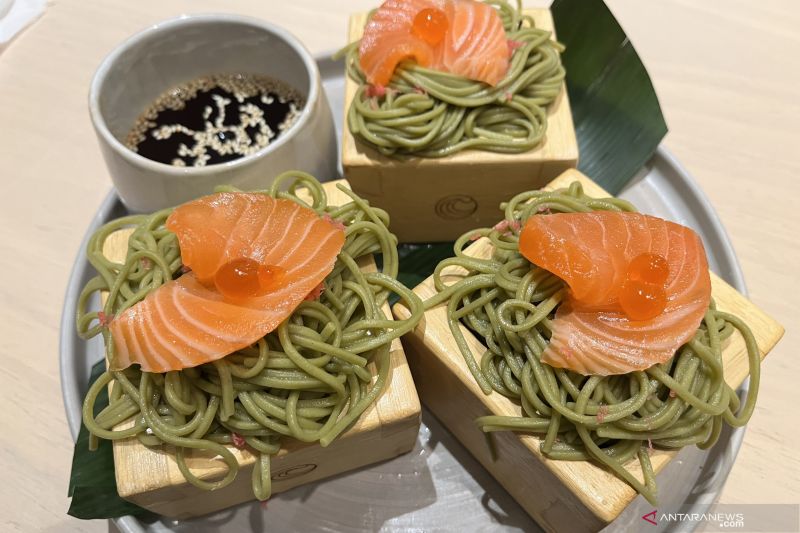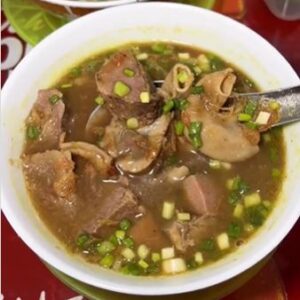
Jakarta (ANTARA) – Many countries have unique food traditions that mark the start of the new year with the hope of bringing happiness, health and prosperity.
According to Times Now, Monday (30/12), food plays an important role in celebrating the New Year.
These New Year’s foods not only bring family and friends together, but also serve as a sign of good luck, prosperity and happiness for the coming year.
Twelve lucky grapes
In Spain, when the clock strikes midnight on New Year’s Eve, there is a ritual of eating twelve grapes. Every time the clock chimes, we must eat one grape.
The ritual is known as “Las Doce Uvas de la Suerte” and is believed to bring good luck and prosperity for each month of the coming year.
Wine is often sold in special packaging for the occasion, making it a festive tradition.
Also read: New Year’s Eve in France without crowds, replaced by luxurious dishes
Buckwheat noodles and Osechi-Ryori
Japanese New Year celebrations feature Toshikoshi Soba, a soba noodle dish that symbolizes longevity and resilience.
Families often eat noodles before midnight. Another dish is Osechi-Ryori, a variety of colorful delicacies such as datemaki for prosperity and kuromame for health, served in a beautiful bento box.
Tteokguk
In South Korea, New Year is celebrated with Tteokguk, a delicious soup made from thinly sliced rice cakes.
Eating Tteokguk is believed to bring good luck and symbolizes getting older.
Tamales and Rosca de Reyes
Mexicans celebrate the new year with tamales, a traditional dish called masa or corn dough filled with meat, cheese or nuts, wrapped in corn husks or banana leaves and steamed until perfectly cooked.
Another sweet food tradition is Rosca de Reyes, a ring-shaped bread decorated with candied fruit, usually eaten in the days leading up to Three Kings Day on January 6.
Also read: Healthy choices for New Year’s Eve dishes
Lentils and Zampone
In Italy, lentils are a symbol of wealth and prosperity because of their coin-like shape. Lentils are often served with zampone (stuffed pork trotters) or cotechino (spiced pork sausage) after midnight on New Year’s Eve.
The dish indicates abundance and hope for a prosperous year ahead.
Hoppin’ John
In the southern United States, no New Year’s Day would be complete without Hoppin’ John, a dish of black-eyed peas, rice and pork.
The food is said to bring good luck, with black-eyed peas symbolizing coins and green vegetables symbolizing money.
Sabzi Polo Mahi
New Year in Persia, Nowruz is celebrated with Sabzi Polo Mahi, a rice dish with spices and fish.
Green spices symbolize renewal, while fish symbolize life and abundance.
The traditional food underscores the theme of rejuvenation and prosperity.
Cransekage
In Denmark, New Year’s celebrations often feature Kransekage, a towering cake made from marzipan rings stacked into a cone shape.
Often decorated with icing, chocolate and almonds, the dessert symbolizes abundance and marks happiness and financial success in the coming year.
Dumplings
In China, dumplings are a mandatory food for New Year celebrations. Its crescent shape resembles ancient Chinese money, symbolizing wealth and prosperity.
Families often gather to prepare these delicious, blissful dumplings together, making it a culinary tradition while strengthening relationships.
Also read: Ragunan Wildlife provides cars and electric bicycles for visitors
Also read: Survey: 74 percent of Indonesians set health resolutions for 2025
Also read: This is the first and last country to celebrate New Year 2025
Translator: Hreeloita Dharma Shanti
Editor: Natisha Andarningtyas
Copyright © ANTARA 2024






